
European Night Trains Luggage Policy: Essential Rules & Smart Tips
Ever tried lugging a suitcase the size of a mini-fridge onto a European night train? I have, and let’s just say, nobody’s going to stop you—but you’re on your own when it comes to carrying and storing it. Most European night trains don’t enforce weight limits, but you need to handle your own bags and make sure they’re stashed safely. That means you’ll want to keep aisles clear, avoid blocking doors, and definitely don’t block escape routes.
On trains like the ÖBB Nightjet, overhead racks work for smaller bags, and there’s space under seats for the bulkier stuff. If you’re dragging around something bigger, you might need to use the dedicated storage areas. And if you’re sharing a couchette with strangers, trust me, a little planning saves you from that awkward midnight scramble with your bags.
Table of Contents
- Key Takeaways
- Core Luggage Allowances on European Night Trains
- Standard Number of Bags and Size Limits
- Weight Restrictions and Self-Carry Requirements
- Carry-On Luggage Versus Checked Bags
- ÖBB Nightjet Luggage Policy Explained
- Bag Limits and Storage Locations
- Recommended Packing for Nightjet
- Special Items and Oversized Luggage
- Luggage Storage Options and Security Onboard
- Overhead Racks and Under-Berth Storage
- Compartments and End-of-Carriage Racks
- Rail Pass Holders: Luggage Rules for Interrail and Eurail
- Reservation Requirements for Pass Holders
- Additional Fees and Restrictions
- Country-Specific Night Train Luggage Policies
- France: Intercités de Nuit
- Italy: InterCity Notte
- Sweden: SJ & Snälltåget
- Essential Packing Tips for Night Train Travelers
- Choosing the Right Luggage
- Efficient Packing and Space Management
- Frequently Asked Questions
- What are the size and weight restrictions for luggage on European night trains?
- Can I bring multiple pieces of luggage on board Eurostar, and if so, how does that work?
- Are there any special considerations for storing oversized luggage on night trains in Europe?
- How does luggage security work on European night trains, and what steps should passengers take?
- What are the guidelines for bringing sports equipment or musical instruments as luggage on European trains?
- Do European night train operators provide luggage assistance for elderly or disabled passengers?
- Book Your Dream Experience
- More Travel Guides
Key Takeaways
- Most night trains let you bring flexible luggage sizes, but you’ll need to handle your own bags
- Storage space changes depending on train type and class
- Smart, light packing really does make overnight travel easier and less stressful
Core Luggage Allowances on European Night Trains
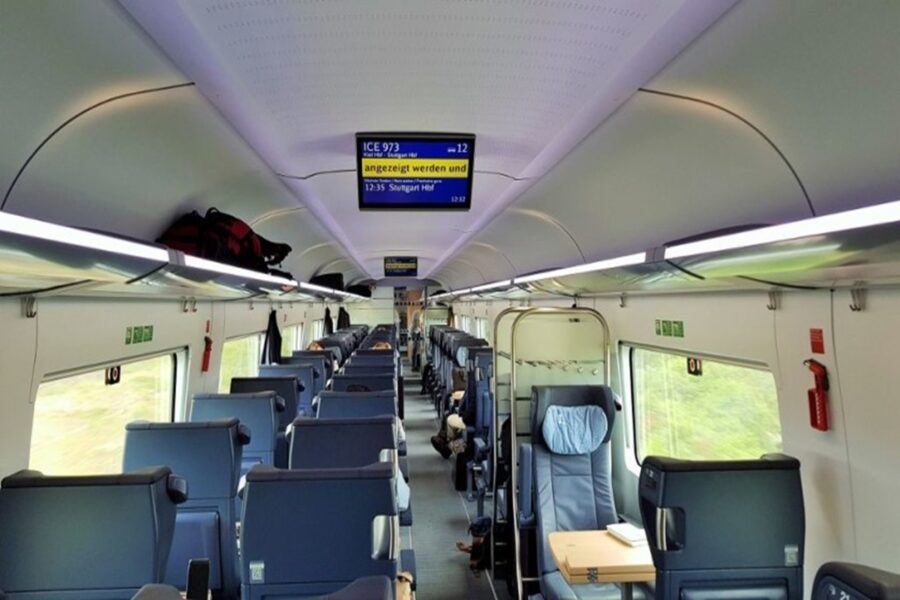
Taking a night train in Europe? You’ll get way more bag freedom than on a plane. You bring your stuff onboard, stash it close by, and skip the whole check-in circus. Still, there are a few rules you’ll want to keep in mind before you start packing.
Standard Number of Bags and Size Limits
Most night trains in Europe don’t have rigid size limits, but they do expect your luggage to fit in the actual storage spaces. That means overhead racks, luggage shelves at the ends of cars, or under your bed or seat if you’re in a sleeper.
The loose guideline: 1–2 larger bags (think medium suitcase or backpack) and a smaller carry-on. On Eurostar and some French TGV night routes, the official limit is 85 cm in any one dimension for big items.
If you’re in a shared couchette or sleeper, space gets tight fast. I’ve squeezed a giant hard-shell suitcase down a narrow corridor before and, honestly, regretted it. A soft-sided bag or a flexible backpack tucks away so much easier.
Night trains like ÖBB Nightjet or Trenitalia Intercity Notte don’t measure your bags unless you’re being really obvious or blocking a walkway.
Weight Restrictions and Self-Carry Requirements
Nobody’s going to put your bag on a scale, but you’ll have to carry it yourself. That means lifting it onto racks, up train steps, and sometimes across platforms—porters aren’t really a thing here.
If you can’t lift your bag over your head, it’s probably too heavy. I try to stick to 15–20 kg max for each big bag, mostly for the sake of my back and my mood.
Budget night services like Spain’s Avlo or France’s Ouigo sometimes check weight and size, and they’ll charge you fees if you go over. But honestly, they’re the exception.
The real “limit” is whether you can handle your own luggage quickly, especially when you’re boarding or need to change trains in a hurry.
Carry-On Luggage Versus Checked Bags
Forget about checking bags—almost no European night trains offer that. You keep your carry-on luggage with you in your compartment or on the racks in your carriage.
Eurostar has a registered baggage service for certain routes (London–Paris/Brussels), but it’s limited and costs extra. Night trains like the Nightjet? Nope, you’re in charge of your own stuff the whole time.
I actually prefer this system. You can get to your things whenever you want, and there’s no chance of your bag ending up in a different country. Keep your valuables—passport, wallet, phone—in a small daypack that you can grab if you leave your seat or cabin.
If you’re traveling solo, think about security. I usually keep my main bag near my head in a sleeper, or loop a strap around something fixed so it’s not easy to snatch in the night.
ÖBB Nightjet Luggage Policy Explained
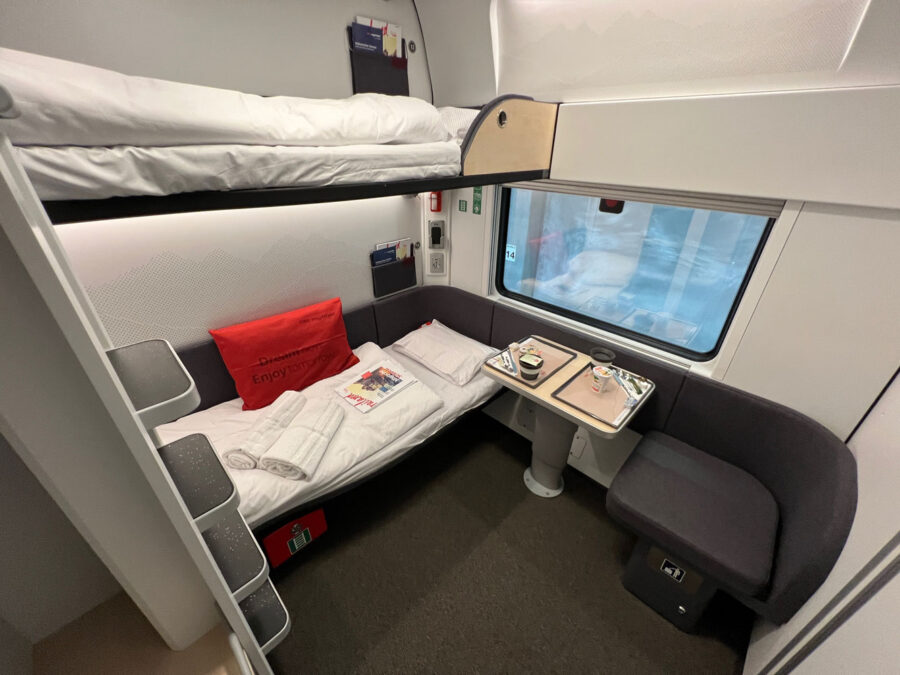
On the ÖBB Nightjet, you don’t have to stress about strict airline-style baggage rules, but you do need to think about space and storage. Compartments are shared, walkways are narrow, and the more you know about where your bags go, the more comfortable your trip will be.
Bag Limits and Storage Locations
Nightjet doesn’t set an official weight or piece limit for luggage. The golden rule? Only bring what you can carry and store yourself.
Small and medium bags fit in the overhead racks above the seats. These racks aren’t very tall, so don’t expect to fit a giant hardshell up there.
Bulkier luggage fits under your seat or in the racks at the end of some coaches. Keep aisles and doors clear—staff will ask you to move your bag if it’s blocking the way.
If you’ve booked a couchette or sleeper, you’ll get a bit more private storage, but it’s still not huge. A carry-on suitcase and a backpack usually fit without making the space feel cramped.
Tip: Make your bag stand out—a ribbon, tag, or sticker does the trick. Compartments get crowded, and you don’t want to grab the wrong black suitcase at 6 a.m.
Recommended Packing for Nightjet
Night trains are a different beast from flights. You’ll be sleeping, changing clothes, and maybe even eating breakfast in your compartment.
Pack a small “overnight” bag with essentials: toothbrush, sleepwear, earplugs, charger, water, and any meds. Keep this within reach so you’re not digging through your main bag at midnight.
For your main bag, soft-sided luggage or a duffel is just easier to fit into tight spaces. If you’re sharing with strangers, you’ll really appreciate being able to tuck your stuff away quickly.
Honestly, bring less than you think you’ll need. I’ve done multi-day trips with just a cabin-sized roller and never missed the extra stuff. The less you pack, the less you have to scramble for in the morning rush.
Special Items and Oversized Luggage
Bringing a bicycle? Only certain Nightjet routes (like Germany–Austria–Switzerland) allow them, and you need to book in advance. Don’t just show up with a bike—they’ll turn you away if space is full.
Pets are allowed only if they’re in a transport box that counts as luggage. No walking your dog through the corridor at night, unfortunately.
For oversized items—skis, guitars, whatever—you can usually bring them if they fit in the racks or under seats and don’t block anyone’s way. In a packed compartment, though, this can be a real challenge.
Some newer Nightjet trains have luggage security cables with NFC locks in certain racks. Super handy if you’re traveling solo and want a little extra peace of mind.
If you’re not sure if your item is allowed, shoot ÖBB an email before your trip. It’s way less stressful than arguing with the conductor at the door.
Luggage Storage Options and Security Onboard

On most European night trains, you keep your bags with you. Storage is built into compartments and corridors, so you rarely have to let your luggage out of sight. The trick is knowing the best spots to stash it—where it’s safe and not in anyone’s way.
Overhead Racks and Under-Berth Storage
Overhead racks show up in both shared couchettes and seated cars. They’re perfect for smaller suitcases, backpacks, or duffels you can lift without a struggle. If you can’t get it up there easily, it probably belongs somewhere else.
Sleeper compartments often have space under the lower berth for medium-sized bags. I’ve fit a 60L wheeled duffel under there with room to spare. It keeps the floor clear and makes the compartment feel less claustrophobic.
Pack a small day bag for valuables and keep it close. Even though theft is rare, you’ll sleep better knowing your passport, wallet, and phone are right by your side. If you’re a light sleeper, try sliding a soft bag under your pillow.
Compartments and End-of-Carriage Racks
Compartments often have a luggage shelf above the door. It’s deeper than it looks and can take a couple of large suitcases. Be careful in the morning—bags shift overnight, and I’ve seen one come flying down when someone wasn’t paying attention.
At the end of some carriages, you’ll spot floor-standing racks for the big stuff. These are great for skis, guitar cases, or a suitcase that won’t fit anywhere else.
If you use these racks, choose a spot you can check on during the journey. A small cable lock or strap helps deter sticky fingers, but honestly, most passengers are just as protective of their bags as you are.
Rail Pass Holders: Luggage Rules for Interrail and Eurail
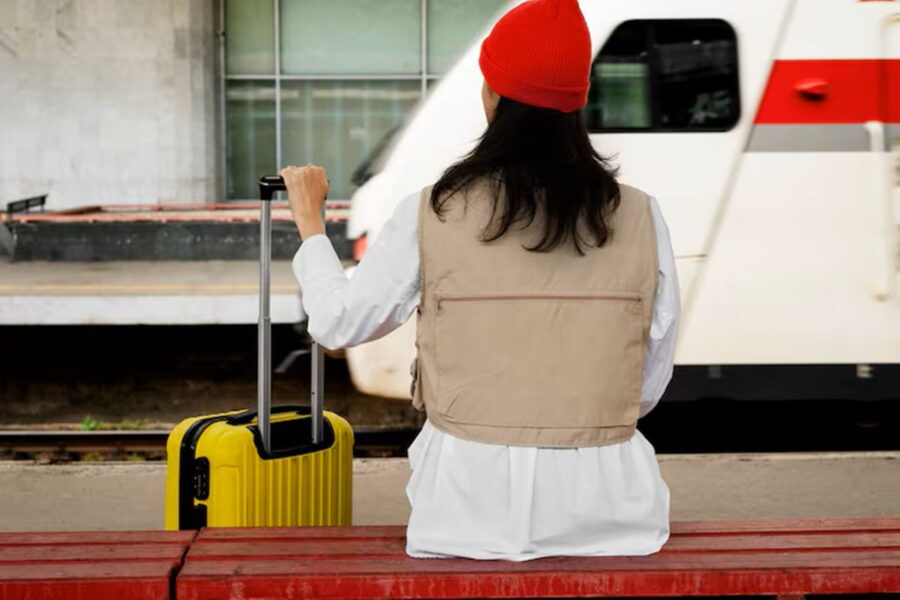
If you’re using an Interrail or Eurail Pass, your luggage rights are pretty much identical to anyone else on the train. The main differences come from the train operators themselves—some high-speed or low-cost services have their own quirks, not the pass.
Reservation Requirements for Pass Holders
A rail pass doesn’t guarantee a seat, especially on night trains. You’ll need a reservation for most of these services, and that’s true no matter how much you’re carrying.
For example, Paris–Berlin night trains require you to book a sleeper or couchette in advance. The reservation covers your bed or seat, not your luggage. No reservation? You’re not getting on.
Some routes, like Eurostar or certain TGVs, have both seat reservations and official luggage limits. Eurostar allows two large bags (max 85 cm each) plus one small item. They don’t usually measure unless you’re really pushing it, but I wouldn’t risk it.
Here’s a tip: I once booked a last-minute couchette from Milan to Vienna and ended up in a lower bunk under a pile of other people’s bags because the racks were full. Reserve early if you want space near your luggage.
Additional Fees and Restrictions
Most European trains—including those covered by Interrail or Eurail—don’t charge extra for luggage if you can carry it yourself. There’s no airport-style check-in. You just bring your bags onboard and stash them.
A few low-cost trains, like Ouigo in France or Avlo in Spain, have strict size limits and charge fees for extra or oversized bags. These aren’t usually included in rail passes, but if you buy a separate ticket, expect those restrictions.
Night trains hardly ever enforce weight limits, but space is at a premium. Compartments fill up fast, and big suitcases can make things awkward. I stick with a medium-sized wheeled bag and a small daypack—both usually fit in couchette spaces without blocking anyone.
Don’t forget about security. Keep valuables—passport, electronics, money—with you in your berth or seat. Leaving them in the rack at the end of the carriage is a gamble, even if theft is rare.
Country-Specific Night Train Luggage Policies
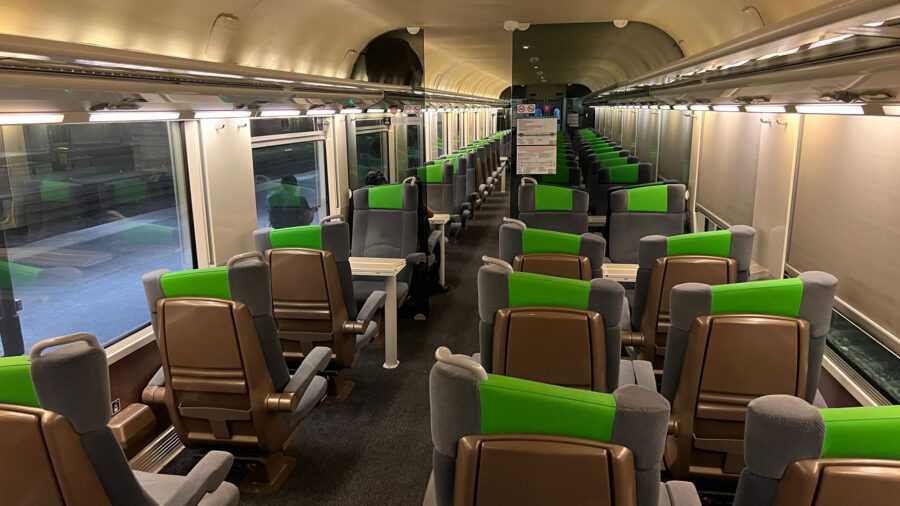
European night trains are more relaxed about luggage than any airline, but each operator has its own quirks. Some have official limits, others just expect you to manage what you bring. Sleeper compartments can feel tiny, so knowing what’s allowed—and what actually works—saves you a lot of hassle.
France: Intercités de Nuit
France’s Intercités de Nuit doesn’t set a strict weight limit, but you have to handle your bags yourself. That means dragging them through the station, onto the train, and into your compartment without any help.
Compartments offer small racks above the seats and a bit of space under the bunks. Large suitcases might need to go in the corridor rack by the door, which isn’t ideal if you want to keep an eye on your stuff.
Tips:
- Keep valuables in a small daypack, always with you.
- Label your luggage with your name or something unique.
- Skip oversized hard-shell cases—they’re a nightmare in tight cabins.
You can bring food and drink, but keep in mind, the space is shared. A massive picnic spread might not win you any friends in a cramped couchette.
Italy: InterCity Notte
Italy’s InterCity Notte trains don’t really stress much about luggage size or weight, but you’ll be carrying it yourself. The real headache? Figuring out how to stash your bag in the compartment without tripping over it at 2 a.m.
Most sleeper cabins have a skinny overhead shelf and a small spot under the lower bunk. If you booked a couchette, it gets even cozier—honestly, soft-sided bags or backpacks just make life easier.
Security’s usually fine, but theft happens, especially if you look like you’re nodding off hard. I always loop my backpack straps around something solid while I sleep. It’s not Fort Knox, but it’ll slow down a would-be thief.
If you’re mixing train and plane travel, double-check carry-on size rules for both. Matching your bag to both can save you from buying an emergency suitcase in Milan (ask me how I know).
Sweden: SJ & Snälltåget
SJ and Snälltåget let you bring a few bags for free, as long as you can fit them into the spaces provided. There’s no official weight cap, but you’re the one hauling your stuff up those train steps.
On SJ night trains, luggage racks sit at the ends of the cars, and you’ll get a small shelf in your compartment. Snälltåget’s sleeper cars work similarly, but couchettes get tight if everyone shows up with a monster suitcase.
During winter, I always see people with skis or snowboards. They’re allowed, but reserving a spot for your gear in advance is smart—ski season fills up fast, and you don’t want to be the one wrestling a snowboard into a crowded corridor.
If you’re traveling solo, keep your main bag close to your berth. I usually use a small lock for peace of mind. It’s not about being paranoid—just makes it easier to sleep.
Essential Packing Tips for Night Train Travelers
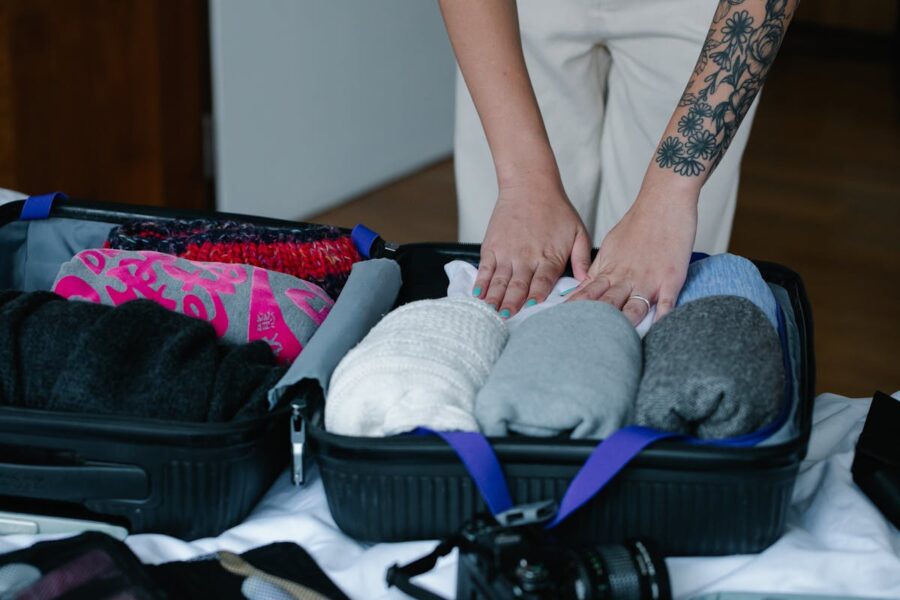
Your comfort on a night train really depends on what you pack and how you organize it. Storage is limited, and you’ll want your valuables close, but you also need to move around without bashing your shins every five minutes.
Choosing the Right Luggage
On almost every European night train, you’ll carry your own bags and stash them above your seat, under it, or in racks at the carriage ends. That means size and weight matter more than you might expect.
I always recommend two smaller bags instead of one massive one. A medium-sized rolling bag plus a small backpack or daypack is a winning combo. The rolling bag goes in the rack, and your backpack keeps your essentials—passport, tickets, electronics—right with you.
If you’re in the market for new gear, look for something lightweight but sturdy. Wheeled backpacks are a lifesaver on cobblestones and station stairs. There’s a ton of compact travel gear out there that’s easy to lift into overhead racks.
I’d avoid oversized hard-shell suitcases unless you’re fine with parking them far from your seat. Some budget trains get strict about luggage, so always check your ticket before you pack.
Efficient Packing and Space Management
Think about what you’ll actually need during the ride. Keep snacks, water, a travel pillow, and a power bank in your daypack. That way, you don’t have to fish through your main bag at midnight.
Packing cubes or compression bags can be a game changer. They keep your stuff organized and help separate clean from dirty clothes, which matters way more than you’d think on a longer trip.
If you’re sharing a compartment, keep your bag neat and easy to move. Your fellow travelers will thank you, and you’ll board or switch trains way faster.
Keep valuables within arm’s reach—even when you head to the dining car or bathroom. I like a small crossbody bag or money belt for passports, cards, and cash.
Here’s a random trick: roll your clothes instead of folding them. You’ll fit more in, and it’s easier to see what you’ve got without unpacking everything.
Frequently Asked Questions
Night trains in Europe feel pretty chill about luggage compared to airlines, but there are still a few things you should know before you pack. Cabins and corridors can get cramped, so planning ahead makes your trip smoother (and keeps your ankles bruise-free).
What are the size and weight restrictions for luggage on European night trains?
Most night trains skip strict weight limits, but you do need to carry your own bags. If your suitcase fits in the overhead rack, under your berth, or on the luggage shelf at the end of the carriage, you’re good.
Medium-sized suitcases or backpacks work best. Dragging a giant bag through narrow train doors and hallways? Not my idea of fun, especially if you’re running late.
Can I bring multiple pieces of luggage on board Eurostar, and if so, how does that work?
Eurostar spells it out: two large bags plus a small item (think handbag or laptop case) for standard tickets. No weight limit, but you carry everything yourself.
You just wheel your bags through security and stash them in racks near your seat or carriage door. No bag check like at the airport.
Are there any special considerations for storing oversized luggage on night trains in Europe?
Oversized items—like huge suitcases or bulky boxes—can be awkward. Some trains have a luggage area at one end, but it’s first-come, first-served.
If your bag won’t fit in the racks, you might need to store it in a staff compartment or even book an extra sleeper berth for your gear. I’ve seen cyclists do this with bike bags.
How does luggage security work on European night trains, and what steps should passengers take?
There’s no locked baggage hold, so your bags stay with you or in open racks. Theft doesn’t happen often, but it’s not unheard of. I keep valuables—passport, wallet, phone—in a small daypack by my bed.
A simple cable lock can attach your bag to the rack while you sleep. It’s not a guarantee, but it’s usually enough to deter someone looking for an easy grab.
What are the guidelines for bringing sports equipment or musical instruments as luggage on European trains?
Most sports gear and instruments count as regular luggage if they’re within size limits. Skis, guitars, and folding bikes need to be in a case or bag.
Some trains require you to reserve a spot for larger things like full-size bikes, even if they’re bagged. Always double-check your route rules—I’ve had to scramble last-minute when a train suddenly banned bikes.
Do European night train operators provide luggage assistance for elderly or disabled passengers?
Absolutely, but here’s the thing—you’ll want to sort it out ahead of time. The onboard staff can step in to help with boarding, hoisting your bags, or even figuring out where to stash them.
If you or someone you’re traveling with needs a hand, get in touch with the operator’s special services team during the booking process. They’ll actually meet you right on the platform and take care of your luggage, so you’re not left scrambling or stressing about it.



